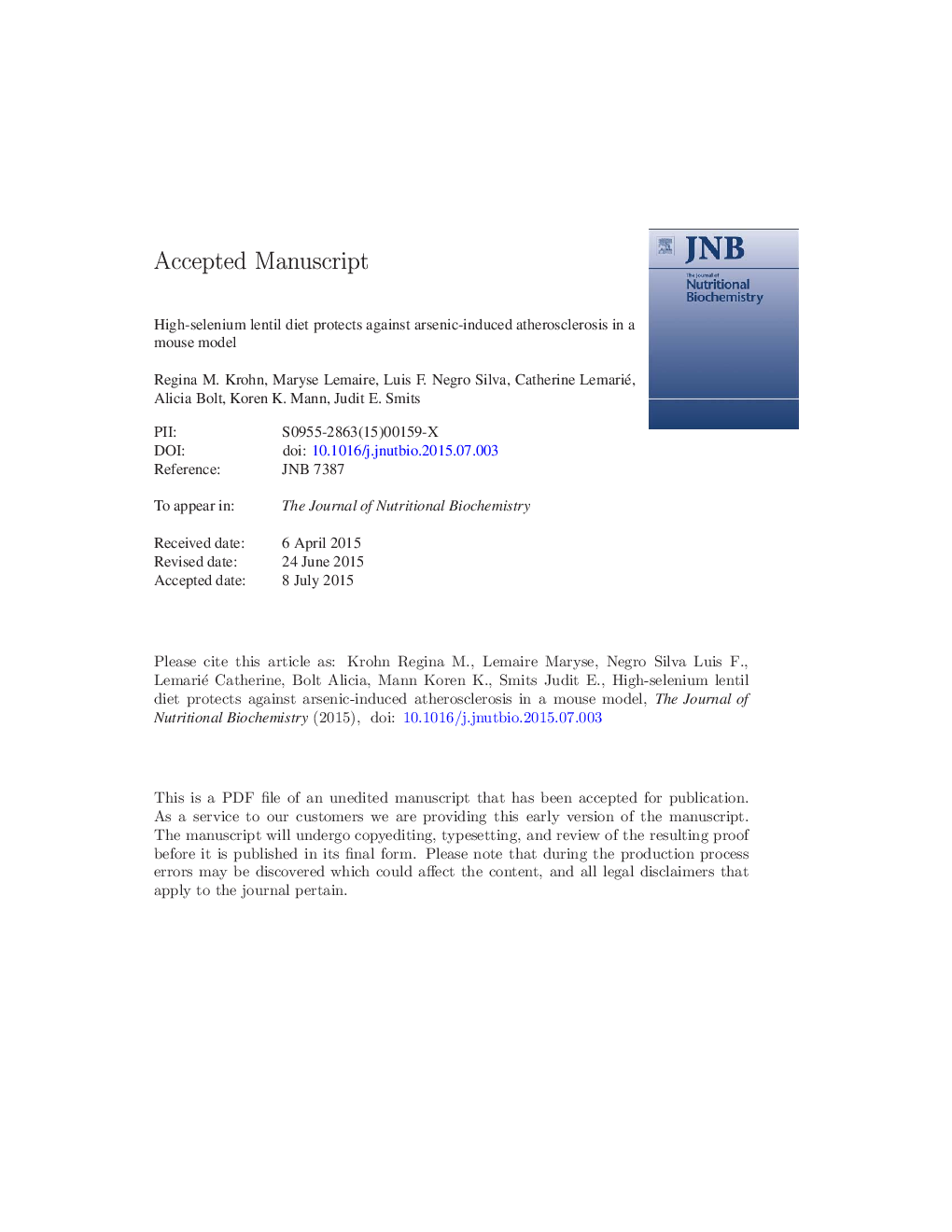| Article ID | Journal | Published Year | Pages | File Type |
|---|---|---|---|---|
| 8336667 | The Journal of Nutritional Biochemistry | 2016 | 31 Pages |
Abstract
Background: Cardiovascular disease (CVD) is a major cause of death worldwide, and arsenic (As) intake, mainly through drinking water, is a well-known risk factor for CVD as well as other health problems. Selenium (Se) is a known antagonist to As toxicity. Objective: We tested the potential of high-Se lentils from the Canadian prairies as a therapeutic food to alter the outcome of As-enhanced atherosclerosis. Materials and Methods: Male ApoEâ/â mice exposed to a moderate level of As (200Â ppb) in their drinking water, and control mice on tap water received one of three lentil diets: Se-deficient (0.009Â mg/kg), Se-adequate (0.16Â mg/kg) or Se-high (0.3Â mg/kg). After 13Â weeks, lesion formation in the aortic arch and sinus were assessed. Intralesional cellular composition, serum lipid levels and hepatic oxidative stress were assessed as well. Results: Arsenic-exacerbated plaque formation was reduced in the sinus and completely abolished in the aortic arch of mice on the Se-fortified lentil diet, whereas lesions were increased in As-exposed mice on both the Se-deficient and Se-adequate diets. Notably, Se deficiency contributed to proatherogenic composition of serum lipids in As-exposed mice as indicated by high-density lipoprotein:low-density lipoprotein. At least adequate Se status was crucial for counteracting As-induced oxidative stress. Conclusion: This study is the first to show the potential of high-Se lentils to protect against As-triggered atherosclerosis, and this invites further investigations in human populations at risk from As contamination of their drinking water.
Related Topics
Life Sciences
Biochemistry, Genetics and Molecular Biology
Biochemistry
Authors
Regina M. Krohn, Maryse Lemaire, Luis F. Negro Silva, Catherine Lemarié, Alicia Bolt, Koren K. Mann, Judit E. Smits,
